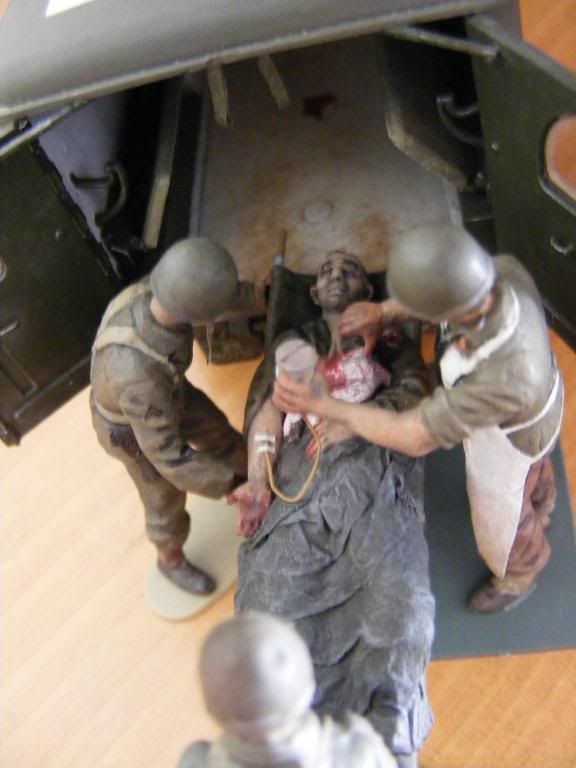Sure! Blood is actually more of a darker red or red-brownish color. For the German sniper casualty and others I have modeled, I use a mix of Model Master/Testors "flat red" and a combination of either Pactra "flat hull red" or Model Master/Testors "rust." (I use acrylics.)
You want it to hint blood and not look like ketchup. Plus, as I said, don't over-do the gore. Wounds bleed and can bleed a lot, but not as badly as you see in the movies--even very traumatic wounds like amputations (they actually can bleed less than a gunshot wound or laceration). A very grievous wound can be depicted without spattering "blood" (red paint) everywhere or having a massive pool of blood. Simply the location of the wound or the skin tone of the casualty can tell a lot of the story (people in shock are usually very pale).
Here's another example of a casualty I modeled. This is the first part of a Battalion Aid Station diorama I was/am planning/working on (slowly). It's a G.I. being unloaded from an ambulance and the surgeon (holding the IV plasma bottle) is checking the extent of the chest/abdominal wound.

I have some other pictures of real casualties, but they may be a little disturbing or graphic for this family-friendly forum so I won't post them here. PM me if you would like to see them.
Hope this helps.